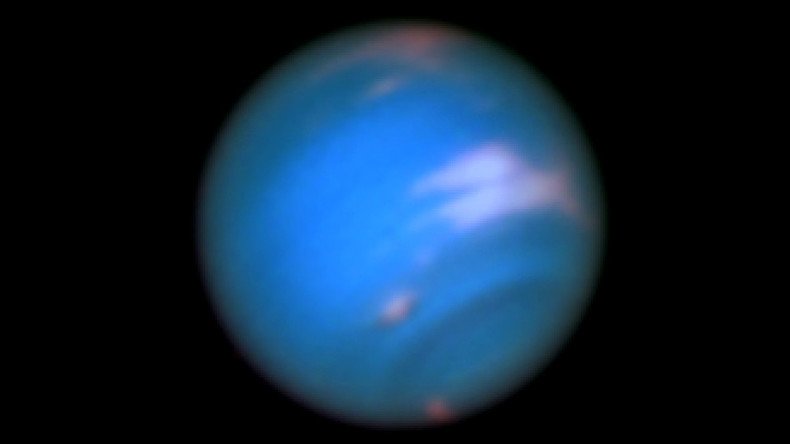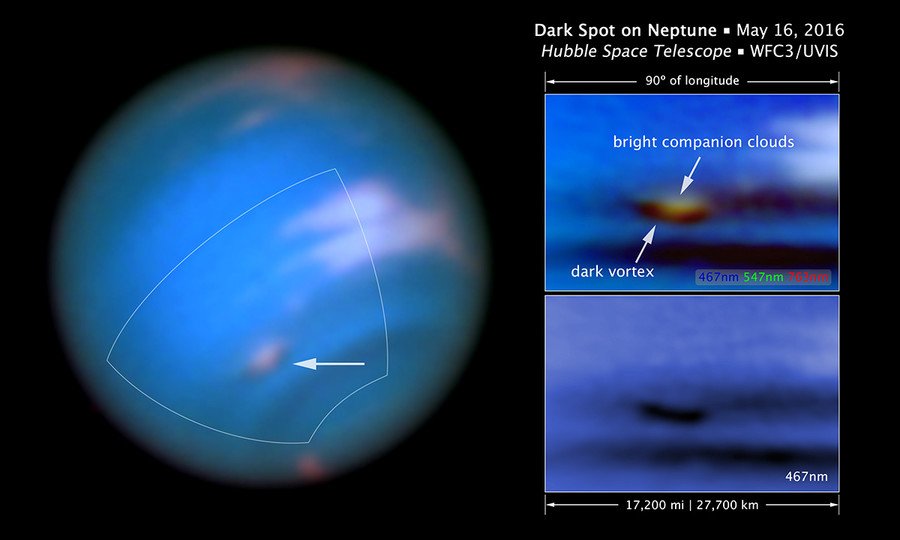NASA finds new ‘dark vortex’ looming over Neptune (PHOTO)

NASA’s Hubble telescope has recorded its first “dark vortex” sighting on Neptune this century during an observation on May 16.
The image of the planet’s dark spot is the third such phenomenon ever captured by NASA.
The mysterious feature was previously spotted by Hubble in 1994 and, before that, by Voyager 2 in 1989.
New dark vortex discovered in the atmosphere of Neptune, observed by @NASA_Hubble: https://t.co/IXmS6hZo40pic.twitter.com/l4voKGiwF3
— NASA (@NASA) June 23, 2016
A dark vortex is an area of high pressure that can come in different shapes and sizes and is usually accompanied by bright “companion clouds”, according to the space agency. These clouds form when air flows up high in the atmosphere over the dark vortex, causing gases to freeze into methane ice crystals.
"Dark vortices coast through the atmosphere like huge, lens-shaped gaseous mountains," said research astronomer Mike Wong, who led the analysis of the Hubble data.
"And the companion clouds are similar to so-called orographic clouds that appear as pancake-shaped features lingering over mountains on Earth."

While this is the first confirmed sighting of a dark vortex in 22 years, researchers suspect others have passed through Neptune’s atmosphere throughout that time.
In July last year, bright clouds were seen on the planet by several observers at the W. M. Keck Observatory in Hawaii.
Astronomers suspected that these clouds might be bright companion clouds following an unseen dark vortex but couldn’t confirm this, as only the Hubble telescope has the necessary high resolution to identify the dark vortices.
They now hope to gain a greater understanding of how these vortices form and interact with their environment by measuring the evolution of this new vortex.
Researchers are also interested in finding out why the vortices disappear so quickly. Comparing them to Jupiter’s storms, NASA says the spots come and go much quicker than the anticyclones on that planet which take decades to mature.
READ MORE: Wave near equator: NASA's Hubble Telescope animation shows Jupiter in 4k Ultra HD (VIDEO)












